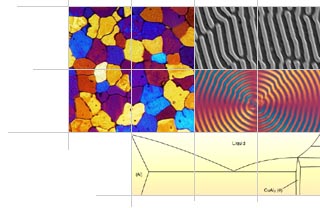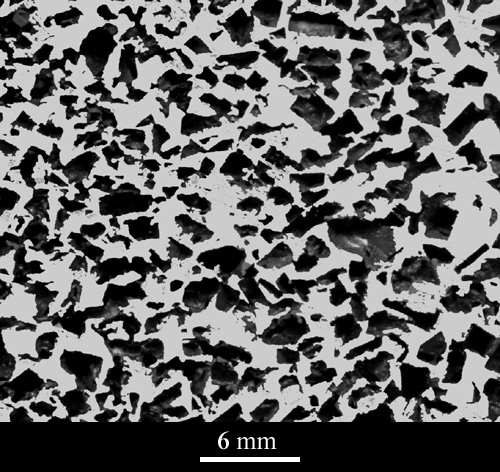Micrograph Library
Browse the libraryAdvanced searchSystemsCompositionsTechniquesKeywordsPhase diagramsHelpPreferencesAbout the micrograph libraryTerms of useContribute micrographs!FeedbackLinksCredits Print this page

Micrograph 631 and full record

- Micrograph no
- 631
- Brief description
- Coarse open celled aluminium foam produced by infiltration of sintered salt (FOAM-U-LIKE)
- Keywords
- alloy
 , aluminium
, aluminium  , aluminium foam, angular, cell
, aluminium foam, angular, cell  , composite foam, composite material
, composite foam, composite material  , foam
, foam  , infiltration, metal, salt
, infiltration, metal, salt - Categories
- Foam, Metal or alloy, Metal or alloy composite foam
- System
- Al
- Composition
- Not specified
- Standard codes
- Reaction
- Processing
- A precursor of lightly sintered salt is infiltrated with molten aluminium in a press and then washed out
- Applications
- Open cell aluminium foams may be useful as surfaces for catalysts or electrochemical applications. They are also used in heat exchangers.
- Sample preparation
- Technique
- Photography (no microscope)
- Length bar
- 6 mm
- Further information
- FOAM-U-LIKE (Foaming of aluminium metal using lightly interconnected kevelled elements) is a very inexpensive route for the production of coarse open celled foams. It allows a reasonable degree of control over cell size and shape, and results in relatively uniform morphology. The interconnectivity of pores can be controlled by varying the degree of sintering of the precursor. In this case, grains of 1-4mm diameter have been sintered at 600 degrees C for just 10 minutes, giving rise to lightly interconnected, angular pores. Wash out is slow, and can be improved by longer sintering which gives thicker necks between salt grains and hence more interconnection of pores in the reticulated structure.
- Contributor
- J A Curran
- Organisation
- Department of Materials Science and Metallurgy, University of Cambridge
- Date
- 03/10/02
- Licence for re-use
 Attribution-NonCommercial-ShareAlike 4.0 International
Attribution-NonCommercial-ShareAlike 4.0 International
View image alone .. in a new window
Help is available on downloading images

